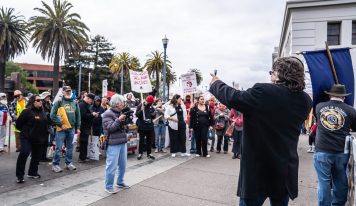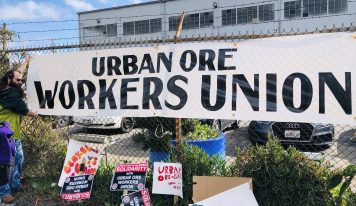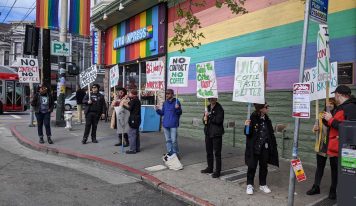San Francisco — A heated political battle has begun in the city over new housing development adjacent to the University of California San Francisco (UCSF) Parnassus Heights campus. Despite the stakes of the fight being seemingly localized to affect UCSF employees and students, as with all things housing in the Bay Area this is really a proxy battle about the future of affordable housing in the city.
UCSF has announced plans to massively expand its Parnassus Heights campus by more than 40%, especially its housing stock for students and employees. This translates to adding another 1.5 million square feet to the campus and 1263 units of housing.
This plan to expand UCSF hospital and affiliated-housing has led to vocal support and opposition. Centrist politicians have championed the expansion as a boon to the city. YIMBY (“Yes in My Backyard”) advocates, who believe in building housing regardless of affordability, are ardently supporting this plan simply because it involves building more housing, though only half of the units are projected to be completed by 2030. NIMBY (“Not in My Backyard”) organizers in the Inner Sunset and the Parnassus campus neighborhood have opposed this plan, due to concerns about increasing traffic, raising rent in the neighborhood, and noise associated with ongoing construction.
The NIMBY positions on the project generally seek to limit affordable & public housing stock, create exclusionary neighborhoods/areas, and further racial segregation in San Francisco. At the same time, YIMBY support of the project does not address the fact that many of UCSF’s current housing units are vacant today, meaning that housing supply alone does not guarantee people have housing.
UCSF’s housing policies to date have been problematic: UCSF owns and operates housing exclusively for faculty, graduate students, and staff. However, UCSF employees & students typically cannot afford UCSF housing, resulting in many of UCSF’s housing units remaining vacant. The proposed units will likely suffer the same fate.
The Memorandum of Understanding (MOU) promises that, by 2050, 40% of housing at UCSF will be affordable for those earning between 90% and 120% of the area median income (AMI)–or between $80,000 and $107,000 a year. However, these AMI ranges are completely out of sync with the median wages of UCSF students and staff.
The average staff makes around $50,000 per year, with the majority of staff making less than $70,000 per year. Graduate students at UCSF make $40,000 pre-tax and are not included in average staff salary calculations. Medical students take on, on average, $139,457 in debt to attend UCSF; Dental students, $211,144. Similarly, UCSF pharmacy students’ tuition & housing costs are $87,209 annually. UCSF Nursing, physical therapy, and other professional students are also forced to take on substantial debt loads. In other words, even the so-called “affordable units” at UCSF would be unaffordable to 90% of students and staff. Not to mention, 60% of these units would have even higher rents.
Supervisor Preston observed,“ the proposed agreement does not obligate UCSF to provide a single unit of housing to a person earning under $80,000 per year. Not one. In fact, half the “UC Affordable Units” could be rented to people earning $80,000 and up, and the other half to individuals earning $107K and up. The affordability levels should correspond to the jobs-housing fit, including a band of affordability for those with lower incomes, like service workers represented by AFSCME Local 3299. As a result, these units will likely sit vacant, much like UCSF’s most recent housing development–the Tidelands.
According to current residents, Tidelands housing—owned and operated by UCSF in Mission Bay—has faced large vacancy rates and UCSF now uses the empty units to quarantine COVID patients, without the consent of existing residents. Tidelands housing is pre-furnished, forbids bringing your own furniture, and lacks amenities such as in-unit ovens. Essentially, it is an expensive college dormitory COVID-19, it’s hard to imagine these units staying competitive.
However, UCSF does not have any undergraduate students: The average students are in their late twenties & early thirties, often living with partners and children. The average age of staff is presumably even older. Additionally, neither students nor staff can afford this dormitory-style housing: A single room in a two-bedroom unit costs close to $1400 for students and even more for faculty and staff. Just in the past few months, 530 people moved out early (358 related to COVID or COVID costs). The situation has become so dire that the University has established a task force to identify solutions, though lowering rent does not appear to be on the table.
Finally, none of the subpar terms of the MOU are even legally binding, so the hospital could break promises with no repercussion and no way for the board to respond to demand change.
UCSF housing currently operates as a nonprofit, separate from the rest of the institution & UC system. The sequestration of UCSF housing from UCSF the institution prevents resources that could be used to subsidize rent from being redistributed from the profitable sectors of UCSF, where employees & students work, to UCSF housing. UCSF Hospital makes an operating profit and a more holistic approach that uses its cash flow to actually support its students and staff is financially feasible.
Many advocates, staff and students argue that instead of setting rent based on area median income, UCSF could set rent based on the median income of its staff or donate the units to the city to be part of the city’s own affordable housing. Given that there is widespread support for affordable housing across the city, it is clear that treating housing as an investment, either by developers or in this case by UCSF, has pushed rents up making it unaffordable for many people. Accordingly, advocates demand that at a minimum that UCSF should present a binding MOU that offers housing that employees & students can afford.
Photo Credit: “UCSF Parnassus” by Frank Farm is licensed under CC-BY-NC-ND 2.0





